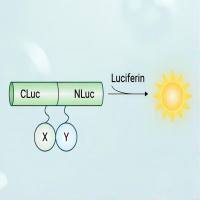Towards Understanding Region-Specificity of Triplet Repeat Diseases: Coupled Immunohistology and Mass Spectrometry Imaging
互联网
互联网
相关产品推荐

Recombinant-Hordeum-vulgare-Low-molecular-mass-early-light-inducible-protein-HV60-chloroplasticLow molecular mass early light-inducible protein HV60, chloroplastic; ELIP
¥9968

GA repeat 多克隆抗体 24492-1-AP
¥1350

FCGR2B/FCGR2B蛋白Recombinant Human Low affinity immunoglobulin gamma Fc region receptor II-b (FCGR2B)重组蛋白CDw32 (Fc-gamma RII-b) (Fc-gamma-RIIb) (FcRII-b)蛋白
¥3000

Recombinant-Rat-Probable-G-protein-coupled-receptor-27Gpr27Probable G-protein coupled receptor 27 Alternative name(s): Super conserved receptor expressed in brain 1
¥12138

荧火素酶互补实验(Luciferase Complementation Assay, LCA)| 荧光素酶互补成像技术(Luciferase Complementation Imaging, LCI)
¥5999
相关问答

